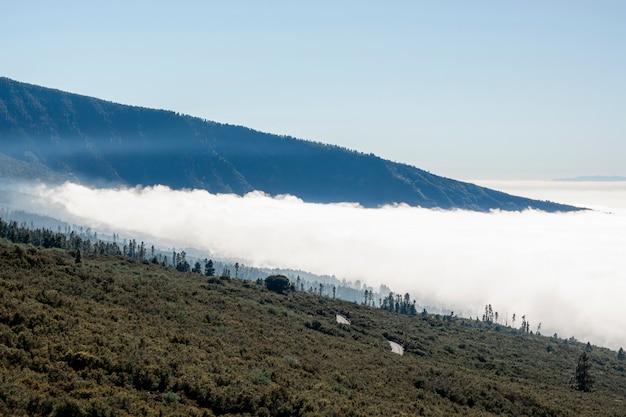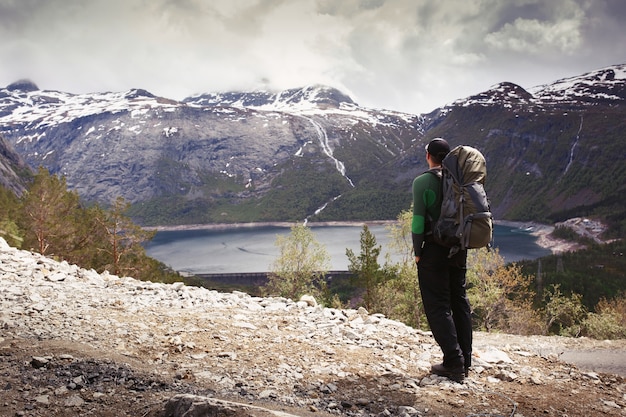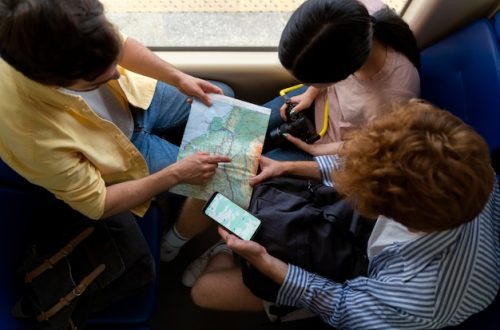
We shared our travel plans on our YouTube channel a couple of weeks ago, and since then, we’ve been completely immersed in planning this epic trip. Just like any major journey, a European adventure requires a lot of thought and preparation.
The first step is deciding which countries you want to visit, especially if you’re planning to use a train pass. Try to map out your trip in a circle to avoid backtracking and wasting precious travel time.
Here’s our planned route:
Turkey ⇒ Bulgaria ⇒ Macedonia ⇒ Albania ⇒ Turkey (for an event) ⇒ Croatia ⇒ Montenegro ⇒ Bosnia & Herzegovina ⇒ Serbia ⇒ Slovenia ⇒ Italy ⇒ Hungary ⇒ Slovakia ⇒ Czech Republic ⇒ Austria ⇒ Poland ⇒ Ukraine ⇒ Romania ⇒ Turkey.
We’re visiting 17 countries in 22 weeks, which is the fastest we’ve traveled in a long time. However, we’re not aiming to see entire countries but rather 2-3 specific places in each, spending around 5 days at each location.
When planning your route, consider the following factors:
Weather:
We’re starting our trip in January, not the best time to be in the northern hemisphere unless you love skiing. That’s why we’re heading to Mediterranean and Balkan countries first, aiming to stay as far south as possible. If you’re not a fan of the cold, avoid the Baltic countries in January, just as you’d want to steer clear of Bulgaria’s scorching 40-degree summer heat.
Season:
To avoid crowds, travel during the off-season or shoulder season. Easter, Christmas, and summer holidays can be very busy with tourists. Traveling in early spring, autumn, and winter (except for Christmas) can be a good choice. If you want to experience holiday festivities, expect crowds.
Festivals:
Decide if you want to experience or avoid festivals. Easter in Italy will be busy but the celebrations are incredible. Hungary’s Spring Festival, Czech Republic’s Beer Festival, and the various Christmas markets are also worth considering.
Transport:
There are many ways to get around – trains, buses, rental cars, hitchhiking, bicycles, and flying. Check the train lines as some countries are better connected than others, which will affect your route. Once your route is set, book your train pass, rental car, or flights.
Train:
For non-Europeans, Eurail is the company for train passes. Europeans should use Interrail. Eurail offers a Global Pass for 28 countries within a certain period. We’ve opted for a pass that allows us to travel between 28 countries for 15 days within two months. Another option is the One Country Pass, which allows travel within one country, such as Italy.
However, train travel in the Balkans (Bulgaria, Macedonia, Greece, Albania, Montenegro, Bosnia, Serbia, and Romania) can be unreliable. Buses are generally a better option in these areas.
Rental Car:
Renting a car can be great for exploring areas that trains and buses don’t reach. The Balkans are particularly suitable for car rentals due to unreliable trains. We’re renting cars in Albania and Macedonia to explore independently. Check if you need an International Driver’s Licence; we need one for Albania but not for Macedonia.
Airplane:
Budget airlines like Pegasus, Ryan Air, Easy Jet, and Wizz Air can save time if you need to cover long distances quickly. Be aware of additional fees for luggage and the lack of designated seats.
Insurance:
Travel insurance is essential, especially for adventurous activities. We recommend World Nomads Insurance, which covers a wide range of activities and allows policy changes while on the road. booking your car rental with a credit card can cover the damage collision waiver, saving extra fees.
Accommodation:
Eastern Europe offers a wide range of accommodation options – hostels, guest houses, B&Bs, hotels, resorts, and boutique hotels. Sites like HostelsClub.com, HostelWorld.com, Booking.com, and travel blogs can help you find the best places. In cooler months, ensure your lodgings have heating and hot water, and in summer, check for air-conditioning.
Technology:
Traveling with a smartphone is incredibly convenient for navigating and translating languages. Wi-Fi is widely available in cafes throughout the region.
Visas:
Check visa requirements for each country. As Canadians, we only need a visa for Turkey, which can be purchased on arrival. Requirements vary by nationality, so it’s essential to check online beforehand.
We’ll be sharing updates and recommendations throughout our trip and would love to hear your thoughts and tips in the comments!




